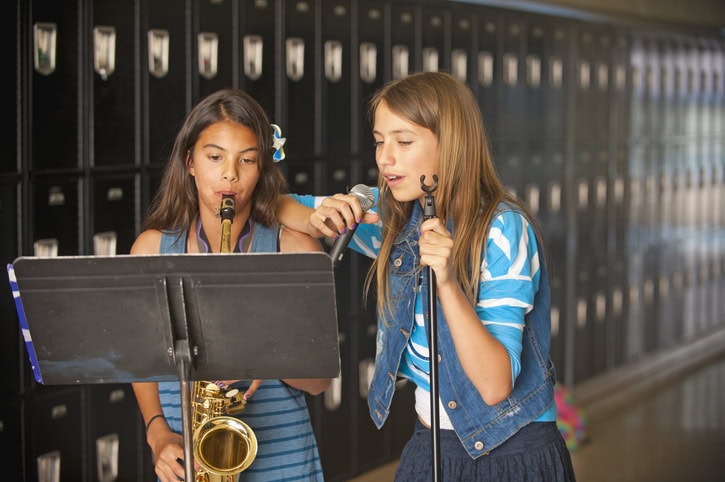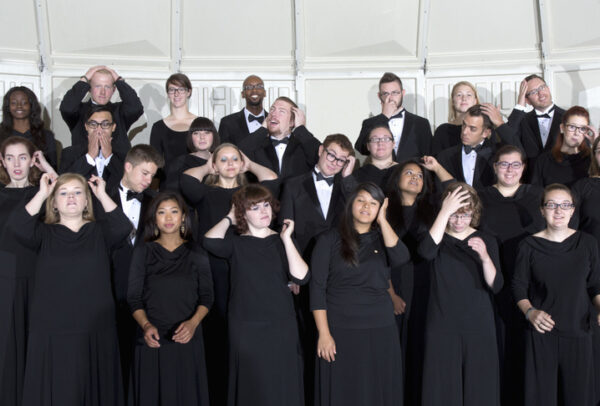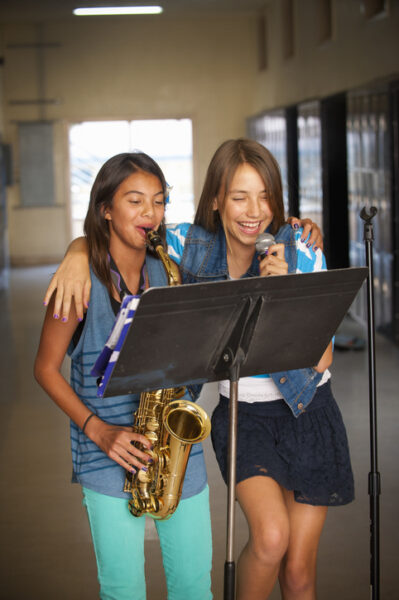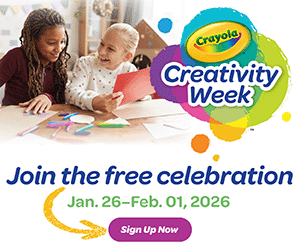/ News Posts / Repertoire Selection that Expands Students’ Experiences
Repertoire Selection that Expands Students’ Experiences
Five Teachers Share Their Ideas
This article first appeared in the October 2024 issue of Teaching Music.
How do you choose your musical repertoire to reflect and support your students while expanding their experiences?
 Brian Beggs
Brian Beggs
Music Teacher, Davidson Middle School, San Rafael, California
Member, Teaching Music Advisory Council Member
In my experience, the two most important things to consider when picking repertoire for your performance groups are knowing your school’s community and picking music that is culturally relevant to your students.
If you are a new teacher to your school, find out what the community values as quickly as you can so that you pick music that reflects the values of that community. Try to avoid overtly political or religious music based on the demographics of your school and community, especially if you are new to the school. Find out if the school has a tradition of doing performances like a Winter Concert, Holiday Concert, or Christmas Concert to avoid awkward interactions with community members. Programming a Christmas Concert in a public school in a community that is non-religious could be very awkward.
Programming music today can be a bit of a political minefield, so I suggest asking the administration about potential pieces you are planning to work on if you have any question about whether or not the community and students will be okay with your choices. Pieces and songs that might have been acceptable a few years ago might now be interpreted as offensive depending on where you are. Once you become established in your school’s community, programming music that reflects the community’s values will be easier and you will feel much more comfortable picking music for the students to learn and perform.
Picking music that is culturally relevant to your students is also very important. In my experience, students respond much more quickly and positively to music they are familiar with, whether it is music their family listens to or music they listen to themselves outside of school. The more relevant to their lives outside of the music classroom, the more interested the kids will be in learning, and you will have a much easier time getting the students to buy into what they are performing.
Culturally relevant doesn’t just mean picking music from countries or regions where students’ families are from—students are also culturally different from their teachers simply because of the difference in ages and generations. Picking a pop piece here or there or playing music from movies they like can also be a great way to connect the students to musical concepts you are trying to teach in the classroom. You might not like the aesthetics of the music, but they might love them. Try to program music from a variety of styles and genres as much as you can so that your students also learn to appreciate music from different time periods, places, and cultures.
I have not mentioned anything about technical aspects or grade levels of pieces or songs because in my experience, those elements take care of themselves as long as you are picking music your students are interested in and your program is well accepted in the community.
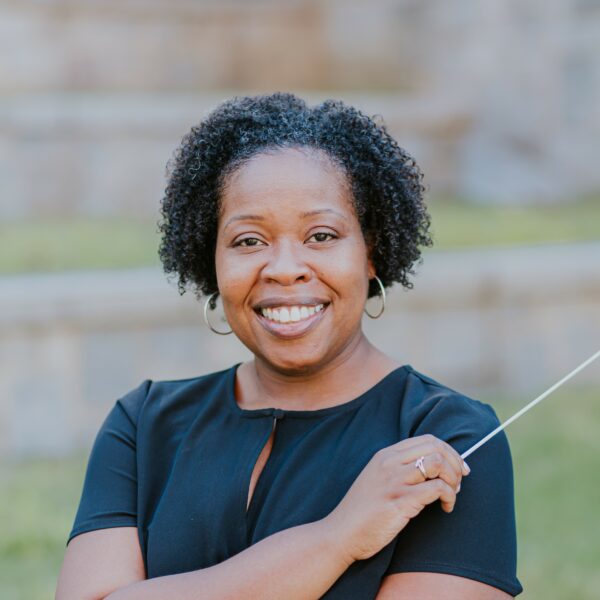 Krissi Davis
Krissi Davis
Orchestra Director, Midtown High School, Atlanta, Georgia
Teacher Leader, NAfME Connected Arts Networks (CAN) Grant Project
Programming music for concerts, particularly the winter concert, presents a delicate balance between honoring student choice and curricular needs. Honoring student voice and opinions in repertoire selection is important as it enhances engagement and gives students ownership in the performance. Aligning concerts to curriculum goals ensures that concepts and standards are met through a wide variety of musical styles and techniques. While it may seem like a daunting task, the following guidelines may help to program a concert that balances student interests and curricular priorities while creating an enjoyable and meaningful experience for students, audience members, and directors.
- Consider the Community You Serve. Every concert should include music representative of your students and the community you serve.
- Think Winter, Not Holiday. Depending on the community you serve or existing school district rules concerning winter concerts, an alternate approach may be to program selections that evoke a winter spirit, rather than selections that directly reference holidays. One example is “My Favorite Things.” While not a winter or holiday selection, it is typically heard in December and associated with that time of year.
- Non-Winter Themed Selections. Some pieces don’t have a winter or holiday theme but are necessary to play for curricular considerations, such as a selection from an upcoming evaluation performance. This type of music acknowledges student populations that are not able to perform holiday-themed selections.
- Preview Listening Session. Students may not be aware of the factors directors consider when programming music, such as ensemble instrumentation or difficulty level. Choose two to three selections that you are considering for performance. Listen to the selections as an ensemble and discuss why selections may (or may not) be a good choice for performance specific to your ensemble. As an ensemble, decide on what piece will be performed. This still honors student voice and helps them to better understand how curricular goals are set, and ultimately how music is programmed by the director.
- Selection Map. Based on the number of selections planned for the concert and factors you must acknowledge, consider mapping out your concert. For example:
-
- Selection #1 – Non-Winter Selection
- Selection #2 – Student Choice
- Selection #3 – Winter/Holiday Selection
- Selection #4 – Non-Winter Selection 2/Curricular Selection
- Selection #5 – Student Choice
- Selection #6 – Winter/Holiday Selection/Audience Favorite
Using these guidelines will help navigate the intersection of student choice and curricular needs to program a concert that fosters learning, student engagement, and meaningful musical experiences.
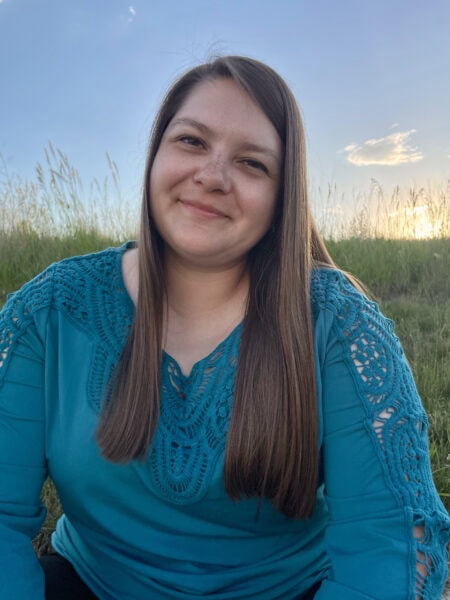 Estela Torres Guernsey
Estela Torres Guernsey
Paintbrush Elementary Music Teacher, Campbell County School District No. 1, Gillette, Wyoming
Elementary Vice President, Wyoming Music Educators Association
Northwest Representative, NAfME Council for General Music Education
When I think of programming musical repertoire for my musicians, I think of the different times of year, and sometimes even different grade levels, as seasons; it’s about balance. When I plan the general theme of a grade level’s annual music performance, I often have a plan in mind of content to cover that connects with my musicians while also expanding their musical worldviews. These performances are all about the process of music learning and sharing our knowledge and successes with our families.
Concert content is about specific genres, artists, skills, or important ideas all musicians who come through my music room should know about, which still leaves space for student input in the classroom. For example, in March, which is Music In Our Schools Month®, students submit their favorite songs for a March Madness bracket.
My choir club has multiple performances a year, so the last concert of the school year is traditionally a themed pops concert. Like the grade level performances, a theme is selected for the K–2 and 3–6 choirs. These themes have included staying cozy, winter creatures, colors, weather, and being together during the holidays. Using themes to tie songs together keeps the focus on the secular parts of the season—weather, feelings, and common sights. Lately, I’ve offered an optional evening event to choir families: Christmas caroling. Being a neighborhood school, we travel on foot and sing traditional carols as we spread cheer.
My general music classes discuss a variety of holidays being celebrated during this time of year, from Hanukkah to Lunar New Year. By not focusing strictly on Christmas, we are still acknowledging it is the predominant holiday in my school.
The long-term arc of what a child who has gone through my music program experiences is a blend of being presented with new windows to look through, new doors to walk through and explore, and the sharing of their own voice that resonates with them.
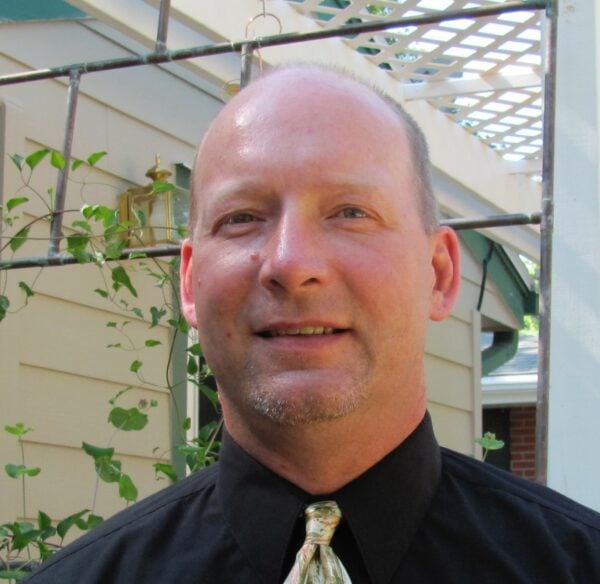 Evan Lee
Evan Lee
Director of Bands
Grand Island Senior High School, Grand Island, Nebraska
I believe that the first and most important part of selecting music is to know your group, especially if you are new to the group. Understand who your students are and where they are musically. Find some recent concert programs to understand the level of music they have been playing and look for a general trend of style or genre. Has the group been locked in the classics, or have they been reading and performing new music? Is it a mix of both? Whatever it is, start somewhere in that area of content and introduce new content that is moving outside of those styles or genres.
Find what skills need building with the group. Is the group rhythmically secure? Are they pitch accurate? Find the level of difficulty and program within that level to start. Master the skills that are important to you in your program before moving to higher levels of music. It is okay to tease the group with some higher level programming, but you want to make sure that the music you have is playable and enjoyable by your group while still pushing and building their current skill set.
When the discussion of holiday versus non-holiday programming comes up, I have always believed that there is merit in programming holiday-type music for a winter concert. Again, you must know your group and your community while doing so. Leaning heavily on one area of religion or holiday celebration can create somewhat of an imbalance for your group, particularly if you have a high level of diversity in your community and school.
Make sure the music you choose has high-level music qualities from an artistic or historical point of view. An example would be programming the “Hallelujah Chorus” by Handel, a significantly historic piece in the world of music with many teachable elements. Although this is a sacred piece of work, the rationale behind programming lends itself to the history of the piece—such as first performance, the tradition of standing during this selection, the process of writing the work—and the artistic value—Baroque style, part of a larger work, fugue, antiphonal writing.
Programming is personal. Programming sets the tone for your group. Decide what you want the group to experience and research what is out there. Find what connects with your group and move them forward as musicians.
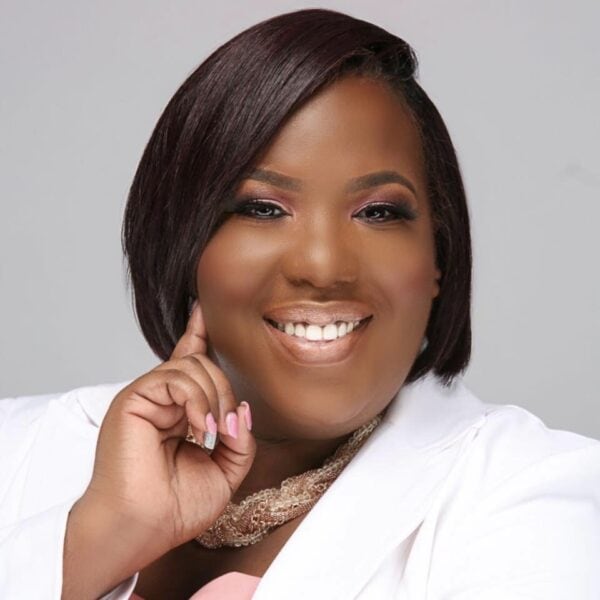 Maria A. Ellis
Maria A. Ellis
Owner, Girl Conductor, LLC, O’Fallon, Missouri
Chair, NAfME Council for Choral Education
My quest for new choir music is a year-round treasure hunt. Whether I’m at a concert, a conference, or just catching a tune on the radio, I’m always on the lookout for that next great piece. When a piece strikes a chord (pun intended) with me, I whip out my phone and jot it down in my notes app. It’s like capturing musical fireflies—every great idea gets a spot in my collection!
Summer is when the real fun begins. I dive into my musical stash and hit up websites to give every piece a listen. Here’s where the magic of organization comes into play. I create two columns:
- We Can Do It: These are the pieces that are within reach for my choir. They’re challenging but achievable, like the perfect recipe for a delightful dish.
- We Are Not There Yet: Think of these as the musical goals we’re aiming for—ambitious and exciting, but maybe a bit out of our grasp for now. They’re our “one day” dreams.
With my “We Can Do It” list ready, it’s time for the real fun—choosing the pieces that will make our season sparkle. I pick out the ones I’m most excited about and put them to the test. I run through the tricky bits with my singers to see how we fare. It’s like a musical obstacle course, and it helps me figure out what’s doable and what’s a bit too daring.
Now comes the grand event—the listening party! I present each selected piece to my choir and get their feedback. It’s like a musical taste test, where the singers’ opinions are the secret ingredient to our success. If a piece doesn’t get the thumbs up, it’s out of the running. After all, the best performances come from music that everyone loves.
After the listening party and a bit of feedback analysis, I finalize our repertoire. The chosen pieces should not only challenge us but also get everyone excited and engaged. It’s all about creating a season that’s both musically fulfilling and joyfully memorable.
Choosing music for a choir is like curating a magical playlist for a grand adventure. It involves a bit of treasure hunting, some meticulous sorting, and a lot of fun feedback. Each step is about ensuring that the music we select will inspire and energize both the choir and the audience.
How do you choose your musical repertoire to reflect and support your students while expanding their experiences? Share your thoughts on Connect!
Did this blog spur new ideas for your music program? Share them on Connect! Interested in reprinting this article? Please review the reprint guidelines.
The National Association for Music Education (NAfME) provides a number of forums for the sharing of information and opinion, including blogs and postings on our website, articles and columns in our magazines and journals, and postings to our Connect member portal. Unless specifically noted, the views expressed in these media do not necessarily represent the policy or views of the Association, its officers, or its employees.
Published Date
May 15, 2025
Category
- Ensembles
- Repertoire
Copyright
May 15, 2025. © National Association for Music Education (NAfME.org)
